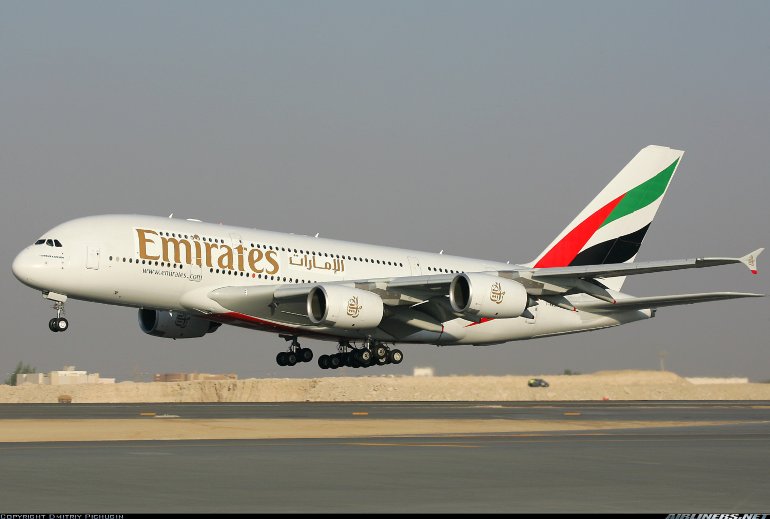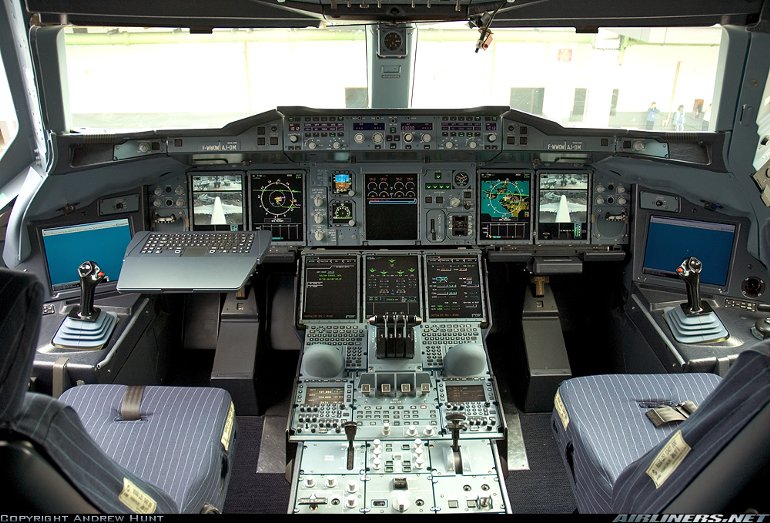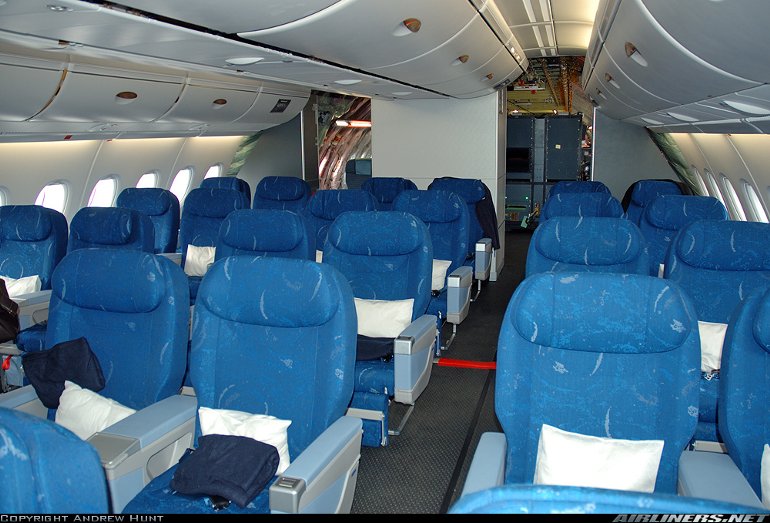Aircraft Technical Data
Airbus A380



| Details | |
| Country of Origin | Europe (France, Germany, Spain, UK) |
| Type | High capacity, long range, twindeck, widebody airliner |
| History | The 555 seat, double deck Airbus A380 is the world's largest airliner, easily eclipsing Boeing's 747. The A380 base model is the 555 seat A380-800 (launch customer Emirates). Potential future models include the 590 ton MTOW 10,410km (5620nm) A380-800F freighter, able to carry a 150 tonne payload, and the stretched, 656 seat, A380-900. Airbus first began studies on a very large 500 seat airliner in the early 1990s. The European manufacturer saw developing a competitor and successor to the Boeing 747 as a strategic play to end Boeing's dominance of the very large airliner market and round out Airbus' product line-up. Airbus began engineering development work on such an aircraft, then designated the A3XX, in June 1994. Airbus studied numerous design configurations for the A3XX and gave serious consideration to a single deck aircraft which would have seated 12 abreast and twin vertical tails. However Airbus settled upon a twin deck configuration, largely because of the significantly lighter structure required. Key design aims include the ability to use existing airport infrastructure with little modifications to the airports, and direct operating costs per seat 15-20% less than those for the 747-400. With 49% more floor space and only 35% more seating than the previous largest aircraft, Airbus is ensuring wider seats and aisles for more passenger comfort. Using the most advanced technologies, the A380 is also designed to have 10-15% more range, lower fuel burn and emissions, and produce less noise. The A380 features an advanced version of the Airbus common two crew cockpit, with pull-out keyboards for the pilots, extensive use of composite materials such as GLARE (an aluminium/glass fibre composite), and four 302 to 374kN (68,000 to 84,000lb) class Rolls-Royce Trent 900 or Engine Alliance (General Electric/Pratt & Whitney) GP7200 turbofans now under development. On July 24, 2000, Emirates became the first customer making a firm order commitment, followed by Air France, International Lease Finance Corporation (ILFC), Singapore Airlines, Qantas and Virgin Atlantic. Together these companies completed the 50 orders needed to launch the programme. On receipt of the required 50th launch order commitment, the Airbus A3XX was renamed A380 and officially launched on December 19, 2000. The out of sequence A380 designation was chosen as the "8" represents the cross-section of the twin decks. In early 2001 the general configuration design was frozen, and metal cutting for the first A380 component occurred on January 23, 2002, at Nantes in France. In 2002 more than 6000 people were working on A380 development. Apart from the prime contractors in France, Germany, the United Kingdom and Spain, components for the A380 airframe are also manufactured by industrial partners in Australia, Austria, Belgium, Canada, Finland, Italy, Japan, South Korea, Malaysia, Netherlands, Sweden, Switzerland and the United States. A380 final assembly is taking place in Toulouse, France, with interior fitment in Hamburg, Germany. Major A380 assemblies are transported to Toulouse by ship, barge and road. On January 18, 2005, the first Airbus A380 was officially revealed in a lavish ceremony, attended by 5000 invited guests including the French, German, British and Spanish president and prime ministers, representing the countries that invested heavily in the 10-year, â?¬10 billion+ ($13 billion+) aircraft program, and the CEOs of the 14 A380 customers, who had placed firm orders for 149 aircraft by then. Later, the following companies also ordered the A380: FedEx (the launch customer for the A380-800F freighter), Qatar Airways, Lufthansa, Korean Air, Malaysia Airlines, Etihad Airways, Thai Airways and UPS. However, in 2007, amid production delays, Airbus announced that it was halting design work on the A380 freighter to concentrate on the passenger version of the aircraft. FedEx and UPS canceled their orders for the aircraft. Five prototypes were used in the flight test programme, which was heavily delayed due to problems with configuration management and wiring issues. The first flight occurred in August 2006, and entry into commercial service, with Singapore Airlines, took place in October 2007. |
| Powerplants | A380-800 - Four 311kN (70,000lb), initially derated to 302kN (68,000lb), later growing to 374kN (84,000lb) thrust Rolls-Royce Trent 900 or 363kN (81,500lb) thrust Engine Alliance (General Electric-Pratt & Whitney) GP-7200 turbofans. |
| Performance | A380-800 - Max cruising speed M 0.88. Long range cruising speed M 0.85. Range 14,800km (8,000nm). Service ceiling 43.000ft (13,100m). A380-800F - Range 10,370km (5,600nm). |
| Weights | A380-800 - Operating empty 277,000kg (610,700lb), max takeoff 560,000kg (1,234,600lb). A380-800F - Operating empty 252,000kg (555,600lb), max takeoff 590,000kg (1,300,700lb). |
| Dimensions | A380-800 - Wing span 79.8m (261ft 10in), length 72,75m (238ft 8in). Height 24,08 m (79ft) |
| Capacity | A380-800 - Flightcrew of two. Standard seating for 555 passengers on two decks in a three class arrangement. Qantas plans to fit its aircraft with 523 seats (in three classes). A380 has 49% more floor area but only 35% more seats (in 555 seat configuration) than the 747-400, allowing room for passenger amenities such as bars, gymnasiums and duty free shops. Cargo capacity 38 LD3s or 13 pallets. |
| Production | 236 firm orders by August 2011. Airbus has forecast a market for approx 1235 airliners of 400 seats and above through to 2020. First delivery took place in autumn 2007. |
| Related Links | Airbus A380 |
The backbone of this section is from the The International Directory of Civil Aircraft by Gerard Frawley and used with permission. To get your own copy of the book click here. |
|








